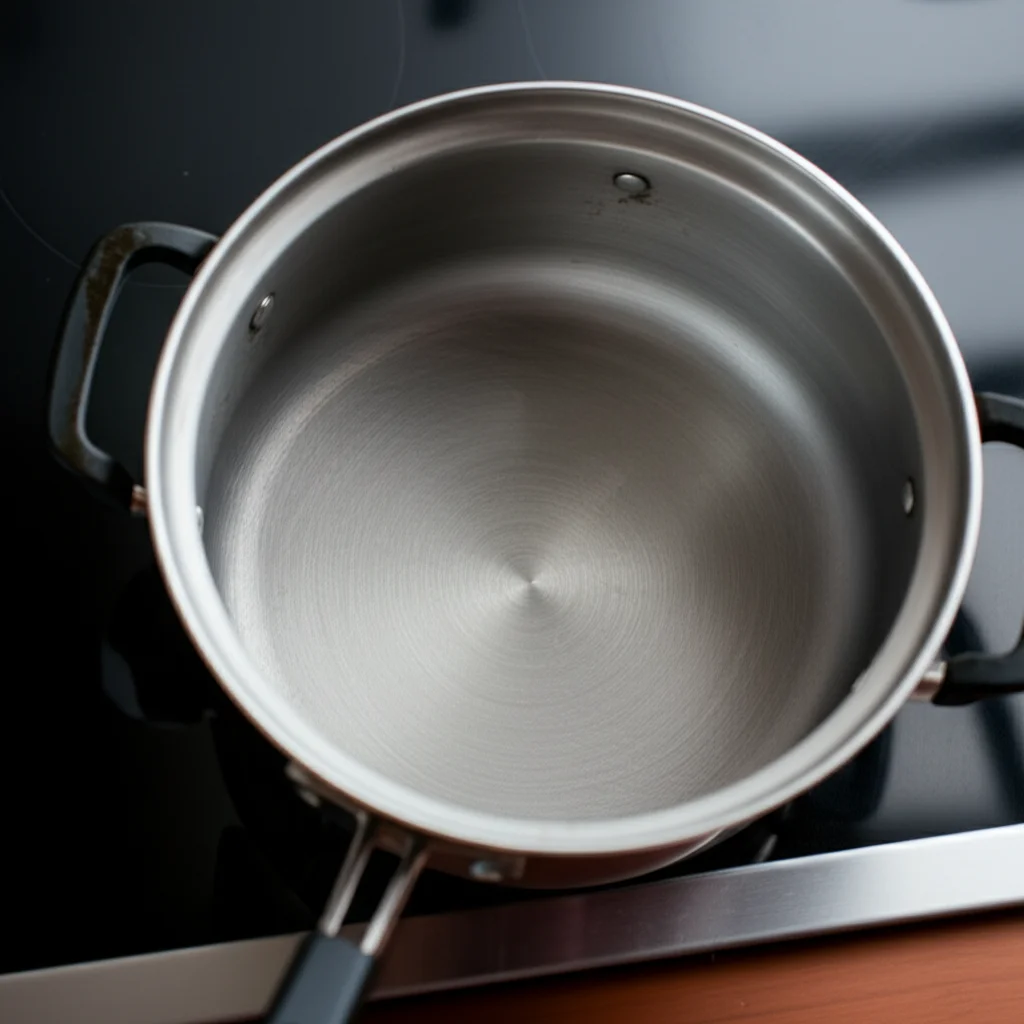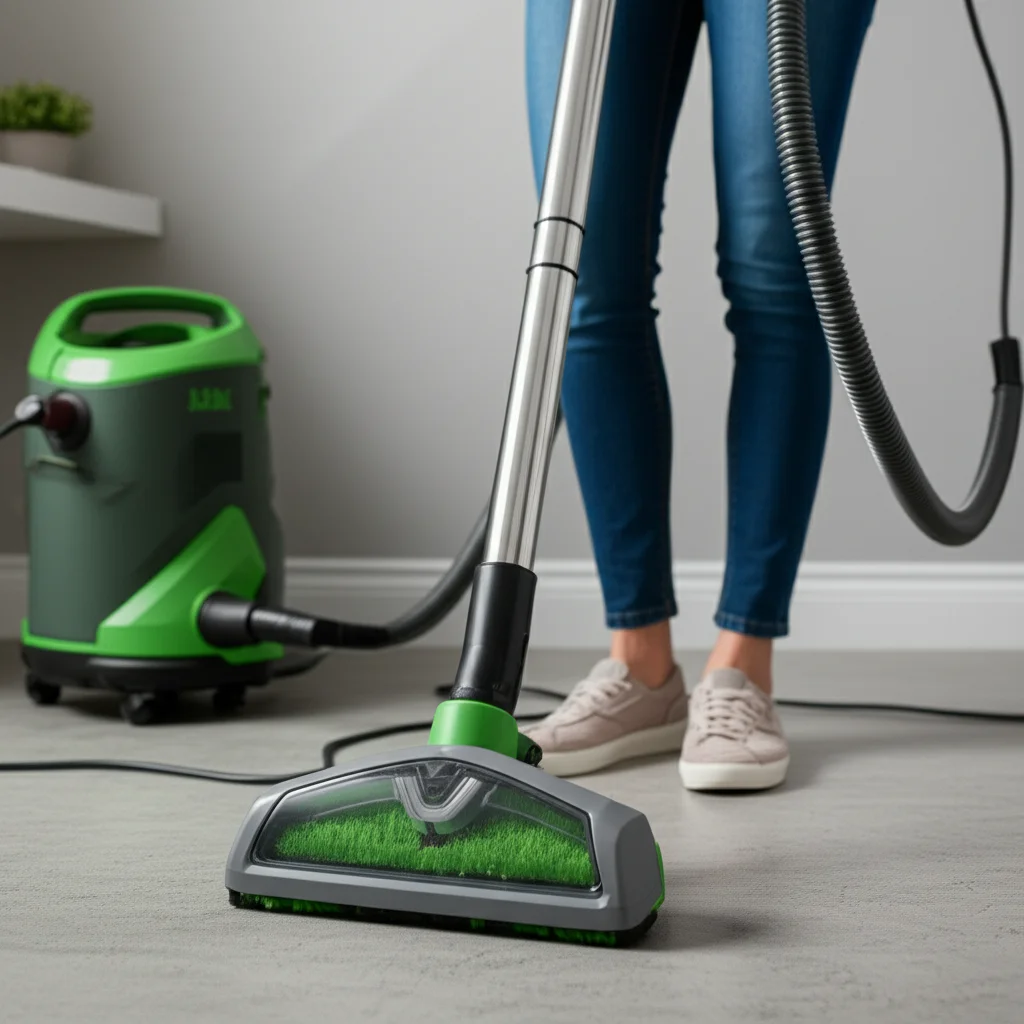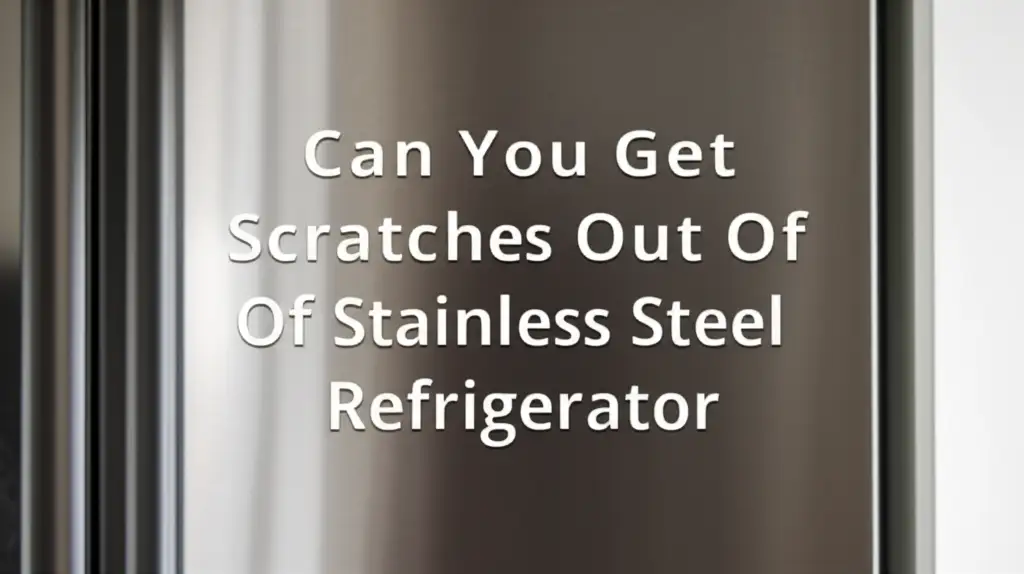· Todd Martin · Home Cleaning · 14 min read
How To Clean Burnt Stainless Steel Pot

How to Clean Burnt Stainless Steel Pot: Restore Its Shine
We have all been there. You get distracted for a moment, and suddenly your beautiful stainless steel pot holds a charred, stubbornly stuck mess. The sight of a burnt stainless steel pot can feel defeating. You might think it is ruined forever, but do not despair.
Cleaning a burnt pot is easier than you might imagine. You do not need harsh chemicals or special tools. This guide will show you several effective ways to clean burnt stainless steel pot using common household items. We will cover methods ranging from gentle soaks to stronger approaches for deeply set burns. You will learn how to restore your pot’s shine and keep it looking new.
Takeaway
- Soak First: Always loosen burnt residue with warm water and dish soap.
- Use Household Staples: Baking soda, vinegar, salt, and lemon are your best friends.
- Apply Gentle Abrasives: Create pastes for scrubbing without scratching.
- Boil Away Stubborn Stains: Heat helps lift stuck-on food.
- Prevent Future Burns: Proper cooking techniques save cleaning time.
To clean a burnt stainless steel pot, begin by soaking it in hot, soapy water to loosen debris. For tougher burns, use a paste of baking soda and a little water, or a mix of baking soda and vinegar, letting it sit to break down the burnt residue before scrubbing. Boiling water with dish soap or vinegar can also effectively lift stubborn scorched layers.
Understanding Burnt Stains on Stainless Steel Pots
A burnt pot is a common kitchen mishap. Different types of burnt stains require slightly different approaches. Knowing what caused the burn helps you pick the best cleaning method. This makes your cleaning efforts more efficient and effective.
Food can burn onto stainless steel in various ways. Sometimes, it is sugary caramel that has hardened into a dark, brittle layer. Other times, it is starch from rice or pasta, forming a tough, glue-like film. Fats and oils can also leave behind black, greasy residue that is very difficult to remove.
Stainless steel itself is durable, but high heat can discolor it. This discoloration, often a rainbow hue, is not actual damage. It is a chemical reaction. It can be removed with acidic cleaners like vinegar or lemon. Understanding these stain types guides you to the right solution. You will avoid scrubbing unnecessarily or damaging your pot.
Gentle Soaking Method for Light Burnt Stains
Sometimes, a simple soak is all you need. This method works well for minor burns or food that is just slightly stuck. It is the first step you should always try. This helps loosen most of the residue before you even start scrubbing.
Start by filling the burnt stainless steel pot with warm water. Add a generous squirt of dish soap. Let the pot sit for several hours, or even overnight. The warm, soapy water softens the burnt food. This makes it much easier to scrape away.
After soaking, pour out the water. Use a non-abrasive sponge or a plastic scraper to gently remove the loosened bits. Avoid metal scrubbers or sharp objects at this stage. These can scratch your pot’s surface. If some residue remains, move on to a stronger method. You might find that a simple soak saves you a lot of effort.
Baking Soda and Vinegar Method for Stubborn Burnt Stains
This classic cleaning duo is incredibly powerful. Baking soda and vinegar create a fizzing reaction that lifts tough burnt stains. This method is effective for various types of scorched food. I often rely on this technique for even deeply burnt pots.
First, remove any loose food from the pot. Pour a layer of water into the pot, enough to cover the burnt area. Add one cup of white vinegar. Bring the mixture to a boil on your stovetop. Let it simmer for a few minutes, then remove it from the heat.
Pour the liquid out, but leave a small amount in the pot if possible. Sprinkle a generous amount of baking soda over the burnt areas. The remaining hot water and vinegar will react with the baking soda. You will see it fizz. Let this sit for about 15-30 minutes. The reaction breaks down the burnt residue. After sitting, use a non-abrasive scrubber to gently scrub the pot. The burnt bits should lift away. For similar stubborn stains, check out how to clean burnt oil from stainless steel pan or how to clean burnt grease from bottom of frying pans. You can also explore how to clean stainless steel pans with baking soda specifically.
Step-by-Step with Baking Soda and Vinegar
- Rinse and Cover: Rinse out any loose burnt food. Add enough water to cover the burnt base of the pot.
- Add Vinegar: Pour in about 1 cup of white vinegar. This adds acidity to the mix.
- Boil the Mixture: Bring the water and vinegar to a boil on the stove. Let it boil for 5-10 minutes. This helps loosen the burnt layers.
- Remove from Heat: Carefully pour out most of the liquid, leaving just a thin layer.
- Sprinkle Baking Soda: Generously sprinkle baking soda over all the burnt areas. You should see a fizzing reaction. This is the magic happening.
- Let it Sit: Allow the baking soda to sit for at least 15-30 minutes. For very stubborn burns, you can let it sit for a few hours or even overnight.
- Scrub Gently: Use a non-abrasive sponge, plastic scraper, or a soft brush. Gently scrub the burnt spots. The residue should come off with less effort.
- Rinse Clean: Rinse the pot thoroughly with warm water. Repeat if necessary.
This method harnesses the power of both an acid (vinegar) and a mild abrasive/alkali (baking soda). The combination works wonders on most burnt stainless steel pots. It is also safe and non-toxic, which is a big plus for kitchenware. Remember to always rinse your pot well after cleaning. For general cleaning advice using these ingredients, see how to clean with vinegar and baking soda.
Salt and Lemon for Tougher Burnt Residue
If the baking soda and vinegar method did not quite do the trick, salt and lemon can be a good next step. This combination uses both abrasive and acidic properties. It is particularly effective for stubborn, baked-on residues. The salt provides a gentle scrubbing action, while the lemon’s acidity helps break down the burnt food.
Start by making sure the pot is completely dry. Sprinkle a generous layer of coarse salt over the entire burnt area. You want enough salt to cover the dark spots. Next, cut a lemon in half. Use the cut side of the lemon to scrub the salt into the burnt residue. The lemon juice will mix with the salt, creating a powerful cleaning paste.
Apply pressure as you scrub. The salt acts as a mild abrasive, helping to scrape away the burnt bits. The lemon juice works to dissolve and lift the burnt material. Continue scrubbing until the burnt residue begins to lift. You can also let the salt and lemon mixture sit for an hour before scrubbing for even tougher stains. Rinse the pot thoroughly afterward. This method often brings impressive results for challenging burns.
Cream of Tartar for Discoloration and Burn Marks
Sometimes, a burnt pot is not just about stuck food; it also has discoloration. Stainless steel can develop rainbow-like stains or dark marks from high heat. Cream of tartar is excellent for tackling these types of stains. It is a mild acid that helps restore the metal’s natural luster.
To use cream of tartar, fill the pot with enough water to cover the discolored areas. Add about 1-2 tablespoons of cream of tartar to the water. Bring this mixture to a boil on your stovetop. Let it simmer gently for 10-15 minutes. The acidic solution works to lift the discoloration.
After simmering, carefully pour out the hot water. Use a non-abrasive sponge or cloth to wipe away any remaining stains. You will notice the rainbow hues or dark spots fade away. This method is particularly good for maintaining the appearance of your stainless steel. It restores the bright, shiny finish you love. It also helps remove minor burn marks that have not fully carbonized into thick layers.
Boiling Water and Dish Soap Technique
This simple technique is often overlooked but can be very effective for many burnt situations. It is especially useful for food that has dried and stuck firmly to the bottom. The heat helps to rehydrate and loosen the burnt material, making it easier to remove. I often start with this method before trying anything more involved.
Pour enough water into your burnt stainless steel pot to cover all the burnt areas. Add a few drops of liquid dish soap. Place the pot on the stove and bring the water to a boil. Reduce the heat and let it simmer for about 10-15 minutes. The boiling water and soap work together. They soften and lift the burnt food.
After simmering, remove the pot from the heat. Let it cool down a bit so you can handle it safely. Once it is cool enough, carefully scrape away the loosened burnt bits with a wooden spoon or a plastic spatula. Avoid metal utensils, as they can scratch the pot. You will find that much of the stubborn residue has become soft and easy to detach. This method is surprisingly effective for common burnt-on food.
Using Commercial Cleaners for Extreme Cases
While natural methods are often preferred, some severe burns might need a bit more power. Commercial stainless steel cleaners can be a last resort for extremely stubborn carbonization. These cleaners are formulated to tackle tough grime. Always use them carefully and follow the product instructions.
When choosing a commercial cleaner, look for products specifically designed for stainless steel. Avoid abrasive powders or steel wool, as these can scratch the surface. Many effective cleaners come in a paste or liquid form. They often contain mild abrasives or chemical agents that break down burnt food. Always wear gloves and ensure good ventilation when using these products.
Apply the cleaner directly to the burnt areas according to the package directions. Let it sit for the recommended time. Then, use a non-abrasive sponge or cloth to scrub. You will often see significant progress with commercial cleaners. Remember to rinse the pot thoroughly multiple times after use to remove all chemical residues. If you have similar baked-on challenges, consider exploring solutions for how to clean baked on grease from pans.
Preventing Burnt Pots: Best Practices for Stainless Steel
The best way to deal with a burnt stainless steel pot is to prevent it from happening. A little care during cooking saves a lot of cleaning effort later. Simple habits can keep your pots looking new. I have learned these tips the hard way, through too many burnt dinners!
First, always use the right size burner for your pot. A burner that is too large can cause the sides of the pot to overheat. This leads to uneven cooking and scorching. Ensure the flame or heating element does not extend past the base of the pot. Also, do not overheat an empty stainless steel pot. Stainless steel heats up quickly. Adding oil or food to an already smoking hot empty pot can cause instant burning.
Second, avoid cooking at excessively high temperatures for long periods. Stainless steel conducts heat very well. Medium heat is often sufficient for most cooking tasks. Always use enough oil or liquid to cover the bottom of the pot. This prevents food from sticking and burning directly onto the surface. Stirring frequently, especially with thick sauces or stews, also helps distribute heat and prevents sticking. These simple practices will extend the life and beauty of your stainless steel cookware.
Restoring Shine and Maintaining Stainless Steel Pots
Once you have successfully cleaned your burnt stainless steel pot, you will want to restore its natural shine. Regular maintenance ensures your pots always look their best. Stainless steel is known for its beauty, and keeping it polished is key. It makes your kitchen feel cleaner and more professional.
After cleaning, dry your pot thoroughly with a soft cloth. Water spots can appear on stainless steel if it air-dries. For an extra shine, you can use a few drops of olive oil on a paper towel. Rub it into the pot’s surface, then buff it dry with a clean, soft cloth. This helps remove streaks and restores a brilliant luster. You can also use a specialized stainless steel cleaner and polisher.
For daily cleaning, wash your stainless steel pots with warm, soapy water and a soft sponge. Avoid abrasive cleaners or steel wool, as these can scratch the surface. Always rinse well and dry immediately to prevent water spots. Store your pots properly to prevent scratches from other cookware. By following these simple maintenance tips, your stainless steel pots will remain beautiful and ready for your next culinary adventure.
Frequently Asked Questions
Is it safe to use steel wool on stainless steel?
No, using steel wool on stainless steel is generally not recommended. Steel wool can be too abrasive and scratch the surface of your pot. These scratches can dull the finish and create tiny grooves where food particles can get stuck. Instead, opt for softer scrubbers made of nylon or plastic.
Can I use bleach to clean a burnt stainless steel pot?
You should avoid using bleach on stainless steel. Bleach can cause pitting and discoloration on the surface of stainless steel, leading to permanent damage. Stick to safer household cleaners like baking soda, vinegar, or specialized stainless steel cleaners. These options are effective without risking damage.
How long does it take to clean a burnt stainless steel pot?
The time it takes to clean a burnt stainless steel pot varies. Light burns might only need an hour of soaking. Stubborn, heavily burnt residue could require an overnight soak followed by scrubbing. Some methods involve simmering for 10-15 minutes. Plan for at least a few hours or even a full day for the most challenging stains.
What if the burn is on the outside of the pot?
To clean burn marks on the outside of your pot, use the same methods as for the inside. A paste of baking soda and a little water works well. Apply it to the burnt area, let it sit, and then scrub with a non-abrasive sponge. For heat discoloration, cream of tartar or vinegar can effectively restore the shine.
Will my burnt stainless steel pot ever be the same?
Yes, in most cases, your burnt stainless steel pot can be restored to its original condition. Stainless steel is incredibly durable. With the right cleaning methods and a bit of patience, you can remove even severe burns and discoloration. Proper cleaning helps it regain its shine and full functionality.
What is the best daily cleaning routine for stainless steel?
For daily cleaning, wash stainless steel pots with warm water and dish soap using a soft sponge. Rinse them thoroughly immediately after washing. Then, dry them completely with a clean, soft cloth. This prevents water spots and maintains their luster. Avoid leaving food residues in the pot for too long.
Conclusion
Seeing a burnt stainless steel pot does not mean it is time to buy a new one. With a few common household items and some patience, you can bring your favorite cookware back to life. We have explored several effective methods, from simple soaking to using the power of baking soda and vinegar. Remember, each method offers a unique approach to tackle different types of burnt stains.
Start with the gentlest option, like a hot water soak, and move to stronger solutions if needed. You now have the knowledge to effectively clean burnt stainless steel pot, removing even the most stubborn residues. Do not forget that prevention is always the best solution. By practicing good cooking habits, you can keep your stainless steel pots gleaming for years to come. Go ahead, give these methods a try, and restore your stainless steel to its former glory.
- burnt pot cleaning
- stainless steel care
- kitchen cleaning
- household hacks
- deep cleaning





